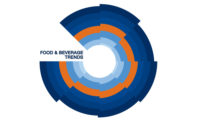Meal Kits, Online Grocery Shopping Revitalize Home Cooking
Study finds that many consumers lack time, confidence to prepare meals at home

More than half of US adults claim they enjoy cooking (53%) and more than a third consider the kitchen to be the most important room in the home (35%), according to data in the new report Eating Trends: Cooking & Food Shopping from market research firm Packaged Facts. These percentages are up compared to a decade ago.
Packaged Facts found that most people who don’t cook at home either have a lack of time to grocery shop and meal prep or they lack confidence in their cooking skills. The latter reason is especially prevalent among Gen Z adults (ages 18-24) and to a lesser extent Millennials (ages 25-39).
The meal kit industry is arguably the best example of a food industry segment that’s making it easier for adults to start cooking more at home again. The products are marketed to emphasize several advantages that pique consumer interest and encourage cooking at home. Meal kits appeal to important consumer segments, namely:
• Busy consumers who don’t have time to shop for groceries or plan meals
• High income consumers who don’t want to or like to shop for groceries or plan meals and are willing to pay more for convenience
• Consumers who have few cooking skills but who want to learn to cook
• Consumers who live alone or in a small household, who don’t like wasting food and want proportions tailored to their needs
Online grocery services provided by Amazon Prime Pantry, AmazonFresh, Instacart, and Peapod—among others—have also proven to be time savers for aspiring home cooks. Since 2013, online sales of groceries have more than tripled from $6 billion to $20 billion in 2018 at a compound annual growth rate (CAGR) of 26%. Through 2023, online grocery sales are forecast by Packaged Facts to rise 34% annually, more than quadrupling from the levels in 2018 and coming to represent 7% of the total grocery market.
Worth watching in coming years will be how grocers and food retailers capitalize on contextual commerce (also known as connected commerce, voice commerce, or conversational commerce). Contextual commerce offers consumers options ranging from buy buttons to messaging bots and voice assistants to scan-and-bag apps. With contextual commerce, consumers have the opportunity to make purchases anytime or anywhere with a button click if they choose but even more conveniently with just their voices. Ultimately, the goal of contextual commerce is to expand retailers’ reach, allowing them to effortlessly implement purchase opportunities into consumers’ daily activities and natural environments. Much like meal kits and food ecommerce, it’s ultimately another step toward saving home cooks time.
Looking for a reprint of this article?
From high-res PDFs to custom plaques, order your copy today!





